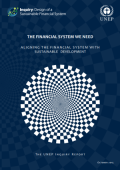Eco-innovation globally emerged as an effort to implement sustainable development. States and firms established and implemented policies and strategies for eco-innovation as one route to achieving sustainable development. Eco-innovation has been facilitated in developed countries, specifically OECD members and European countries, through action plans. Recently, eco-innovation policies have emerged in developing countries. Thus, this study analyzes eco-innovation policies in Asian countries. Policies related to eco-innovation in 17 Asian countries were investigated using policy instrument categories. National policies for eco-innovation were interpreted and compared with development stage classifications. The results indicate that there are similar and different policy approaches to eco-innovation in Asian countries. Given the balance between a technology push (supply side) and a market pull (demand side) in policy instruments for eco-innovation, 17 countries were identified by four categories: leaders, followers, loungers, and laggards. The results provide insight for designing national strategies for eco-innovation in Asia’s developing countries.

In the debate on climate change, methods of producing products and energy are of paramount importance. While the product or the form of energy resulting may be the same, diverging production processes and methods of production may have a critical impact on climate change mitigation, and environmental and human concerns in general. Some may be detrimental, some may be beneficial. They vary from each other, notwithstanding that the final products cannot be distinguished from each other. This paper explores the extent to which renewable energy and non-renewable energy, in particular based on fossil fuels, may be regulated, labelled, or taxed differently, or whether the likeness of the product prohibits doing so in international trade law relating to production and process methods (PPMs). In doing so, the paper mainly focuses on the production of electricity from fossil fuels (coal, oil, and gas), atomic energy, and renewable energy (hydropower, thermal power, wind, solar and tidal energy, and biomass).
The science is unequivocal: stabilizing climate change implies bringing net carbon emissions to zero by 2100 if we are to keep climate change anywhere near the 2°C warming that world leaders have agreed on as the limit. Decarbonizing Development: Three Steps to a Zero-Carbon Future looks at what it would take to decarbonize the world economy by 2100 in a way that is compatible with countries’ broader development goals. The book argues that all countries must:
(i) Plan ahead with an eye on the end-goal so as to enact the right policy mix that will allow them to take advantage of options that offer immediate local co-benefits while taking actions that will allow them to reach the long term objective and avoid locking in carbon-intensive patterns and higher future expense.
The Europe 2020 Strategy has identified the key goal of smart, more inclusive and sustainable growth. In this direction, redirecting firms’ innovation activities towards ecological targets without hampering their competitiveness is of paramount importance. The double externality issue related to environmental innovations makes the policy intervention crucial in order to avoid sub-optimal commitment of resources to the innovation process and ensure the reduction of polluting agents emissions.
